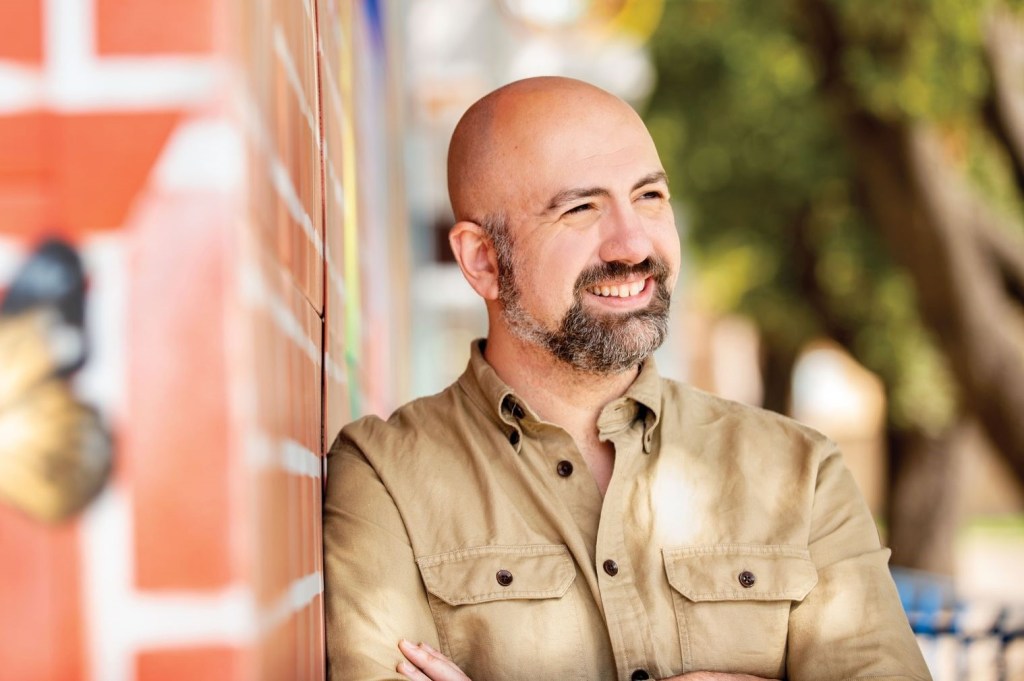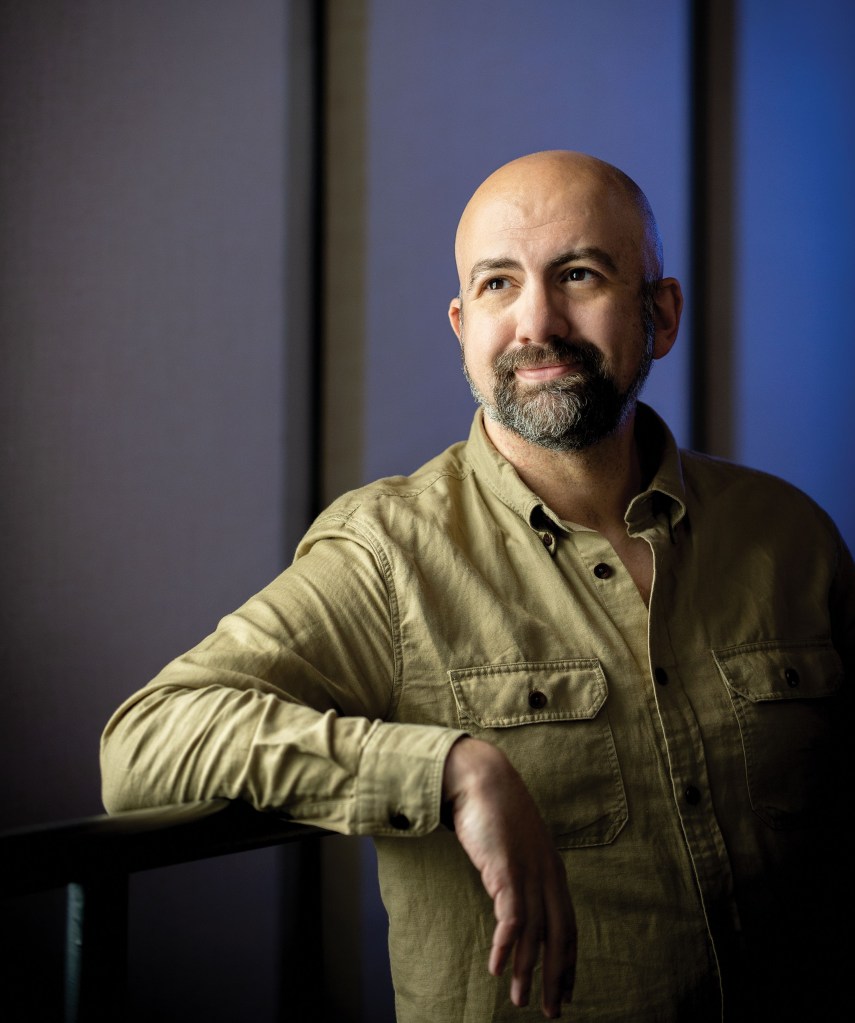How the CEO of Mark Cuban Cost Plus Drug Co. aims to upend the PBM model
Meet Alexander Oshmyansky, the physician Mark Cuban has partnered with to take on the
drug industry.

W hen Alexander Oshmyansky, MD, PhD, pitched the idea of a not-for-profit drug company that would undercut drugmakers’ excessively priced pharmaceuticals, he was soundly rejected by potential backers, attracting no outside money. But on the advice to try to create a for-profit company instead, and with the later backing of Mark Cuban, things started to happen. Now, as founder and CEO of Mark Cuban Cost Plus Drug Co., Oshmyansky says the effort is adding customers at both the retail and wholesale level and the organization is planning to open its first drug manufacturing facility in Dallas in June. Ahead of his keynote talk at the HFMA Annual Conference June 28 in Nashville, Oshmyansky described how his company is hoping to present clear and lower prices to compete with the dominant pharmacy benefit managers and distributors.
Q: Could you tell me a little bit about yourself and how you found yourself running this type of company?
Oshmyansky: Sure. I’m a doctor, a radiologist by training, and I also have a PhD in applied mathematics and theoretical physics. The story of how the company got started goes back to 2015. Do you remember this character Martin Shkreli, the “Pharma Bro?” He was kind of a social media villain-of-the-week type figure who back then had dramatically increased the price of a generic product that he bought the sole manufacturer of. I got upset about that. Some friends of mine who were infectious-disease doctors did as well.
We decided, very naively at the time, “Hey, let’s start up a nonprofit pharmaceutical company; we’ll make the drugs, sell them at cost.” I went out for the better part of three, four years trying to raise financing for that. And I did not succeed. I failed spectacularly, didn’t raise a dime beyond what I put in myself. I eventually got connected to a venture capital firm in Silicon Valley that periodically donated to nonprofits called Y Combinator.
Q: What did they do?
Oshmyansky: They essentially said, “Hey, we like what you’re doing. We’d like to support it, but we don’t think you’ll be able to raise enough money to get it off the ground as a nonprofit. If you reincorporate as a so-called public benefit corporation or for-profit company, but with a stated public mission, we’ll invest in you like we would in any other company.” And to their credit they were right; I was able to raise a small seed-financing round after working with them.
A couple months after that, just on a whim, I emailed Mark Cuban at his public Gmail address. And surprise, surprise, he actually read the emails and got back to me in like a minute. He invested a small amount of money to start with, and he became increasingly enthusiastic as time went on.
Q: And what is his role? Is he actively involved in the company?
Oshmyansky: He is. He’s functionally a full-time co-founder at this point. He’s very involved in operational details.
Q: And so how is this going to work?
Oshmyansky: We’re building what I like to call a parallel supply chain to the existing pharmaceutical system. We are building a manufacturing plant near downtown Dallas that will be focused on making the drugs that nobody else wants to make. Drugs we can’t source anywhere else — particularly shortage products, and drugs that don’t have much of a profit margin on top of them.

And we’ll reveal publicly what our operating expenses are and set our prices based on that, plus a small margin — 15% on top of that to keep us profitable and sustainable, but not extortionate. It’s not enough to set up the manufacturing, because wholesalers are not obligated to buy our products if there’s not enough margin in it for them. Similarly, the big national pharmacy chains and pharmacy benefit managers [PBMs] aren’t under any obligation to put our product on their formulary.
So we decided to build out all of that infrastructure ourselves. We are also a registered pharmaceutical wholesaler with licenses in all 50 states. We use that primarily to wholesale to ourselves, and we have our direct-to-consumer mail-order pharmacy — which we’re by far best known for at this point — operated in conjunction with our fulfillment vendor, True Pill. We’re even setting up employee benefit solutions as bolt-on or add-on benefits for large employers.
Q: Are drug wholesalers the most threatened by this type of company?
Oshmyansky: I don’t think they’re thrilled because a lot of their business model is based on markups on generics. But if people ask who I view as our primary competition, it’s mostly the PBMs. They’re the ones that really make the most money off of financial-engineering type plans, where they basically create a bunch of intermediaries, subsidiary entities, and mark up the price a little bit every step along the way, so no one really sees what happens. And at the end of the day, a drug that costs literally $30 might wind up costing $3,000. That’s not a hypothetical example. That’s a real one — Imatinib, the chemotherapy product. The games that are played can be extraordinary, and it’s baffling that it’s been allowed to come to pass.
Q: What is the manufacturing setup?
Oshmyansky: We’ve designed a facility to be able to pivot from making one drug type to another very quickly in full CGMP [current good manufacturing principles] and full FDA compliance. And the way we’ve done that is with the latest in robotic and single-use disposable technology, which in principle allows us to go from making one product type to another within four hours instead of weeks for extensive cleaning validation. So the idea is whatever drug is in shortage that given week, we can pivot to making that. So, if sodium chloride saline solution has been in shortage for God knows how long now, we can make that.
Q: How would you sum up what you are trying to do?
Oshmyansky: Our philosophy is we don’t sell pharmaceuticals. We sell trust. We’re trying to be as open, as transparent as we can. Trust is a fragile thing, and we work as hard as we can to keep it.
Cost-effective health theme of HFMA Annual Conference
OF NOTE
Expected to draw more than 3,000 participants, offering four strategy-focused general sessions, more than 70 educational sessions and seven content tracks over four days.
CONTENT TRACKS
Accounting and Finance, Data and Analytics, Leadership and Business Strategy, Cost Effectiveness of Health, Innovation and Technology, Payment and Care Delivery Models, Revenue Cycle
KEYNOTE SPEAKERS
Headliners
Thomas Fisher, Jr., MD, MPH, University of Chicago Medical Center
Alexander Oshmyansky, MD, PhD, Mark Cuban Cost Plus Drug Co.
Scott Rouse, behavior analyst
System CFOs
Dennis Dahlen, FHFMA, CPA, Mayo Clinic
Elizabeth Foshage, CPA, MAHCM, Ascension
James Lee, FHFMA, FACHE, MultiCare Health System
Susan K. Nelson, CPA, MedStar Health
William B. Rutherford, HCA Healthcare
Association CEOs
Joseph J. Fifer, FHFMA, retiring, HFMA
Ann Jordan, incoming, HFMA
Richard J. Pollack, American Hospital Association





